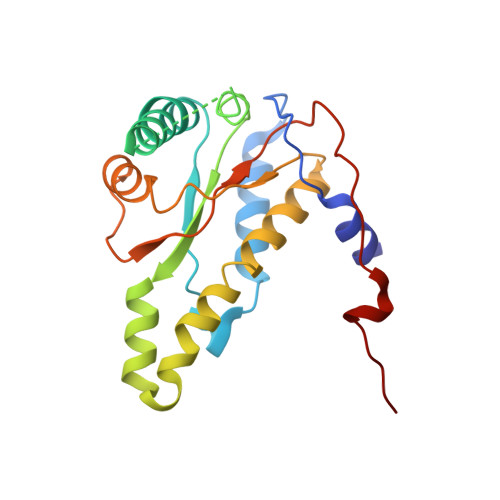Structure and Function of Cind (Ytjd) of Lactococcus Lactis, a Copper-Induced Nitroreductase Involved in Defense Against Oxidative Stress.
Mermod, M., Mourlane, F., Waltersperger, S., Oberholzer, A.E., Baumann, U., Solioz, M.(2010) J Bacteriol 192: 4172
- PubMed: 20562311
- DOI: https://doi.org/10.1128/JB.00372-10
- Primary Citation of Related Structures:
2WQF - PubMed Abstract:
In Lactococcus lactis IL1403, 14 genes are under the control of the copper-inducible CopR repressor. This so-called CopR regulon encompasses the CopR regulator, two putative CPx-type copper ATPases, a copper chaperone, and 10 additional genes of unknown function. We addressed here the function of one of these genes, ytjD, which we renamed cinD (copper-induced nitroreductase). Copper, cadmium, and silver induced cinD in vivo, as shown by real-time quantitative PCR. A knockout mutant of cinD was more sensitive to oxidative stress exerted by 4-nitroquinoline-N-oxide and copper. Purified CinD is a flavoprotein and reduced 2,6-dichlorophenolindophenol and 4-nitroquinoline-N-oxide with k(cat) values of 27 and 11 s(-1), respectively, using NADH as a reductant. CinD also exhibited significant catalase activity in vitro. The X-ray structure of CinD was resolved at 1.35 A and resembles those of other nitroreductases. CinD is thus a nitroreductase which can protect L. lactis against oxidative stress that could be exerted by nitroaromatic compounds and copper.
- Department of Clinical Pharmacology and Visceral Research, University of Berne, Berne, Switzerland.
Organizational Affiliation:

















